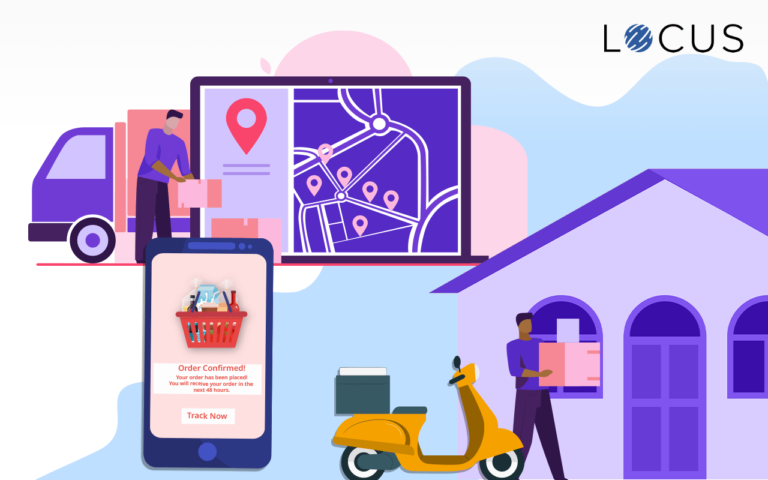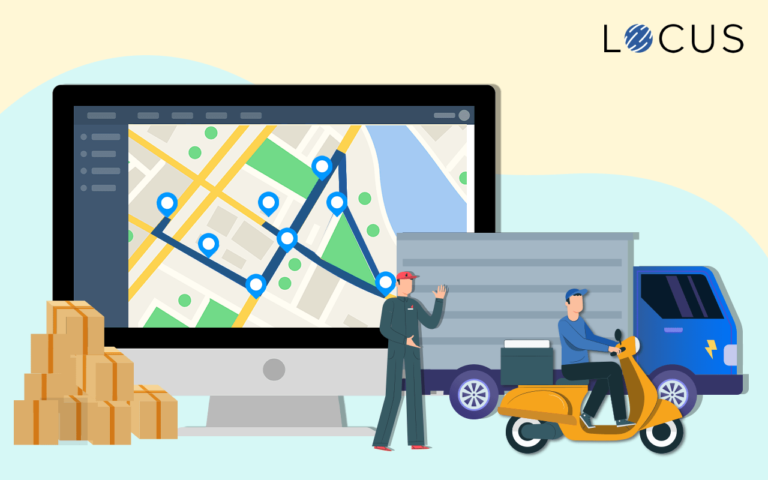3PL, Blog, Delivery Experience, E-Commerce, Grocery, Healthcare / Pharmaceutical, Retail & CPG, Supply Chain Optimization
Software as a Service (SaaS) in the Global Recession of 2020
Apr 21, 2020
6 mins read

Will SaaS reshape the future of logistics and supply chain management in the days to come?
Despite strict lockdown policies implemented by governments around the world, and the persevering efforts of millions of healthcare workers, Coronavirus is spreading fast and disrupting daily lives enormously. The pandemic has hit the world economy hard and analysts worldwide are predicting a disastrous economic downturn that could last a long time.
The International Monetary Fund has stated that Coronavirus may trigger the world’s biggest economic fallout, with only partial recovery in 2021. The consequences of the Covid-19 pandemic could be severe this time, even worse than the global recession of 2008-09 and the great depression of the 1930s.
Clearly, as long as human interaction remains unsafe, businesses cannot return to normal. As we’re headed towards a global recession, we will see a significant decline in general economic activity, a sudden rise in unemployment, shrunken industrial production, and slow movement of supply chains across the globe.
Check Out: The New Fulfillment Models in Logistics
Corporates with work-from-home arrangements won’t lose on labor availability and companies that can address demands such as contactless food deliveries and time slot based fulfillment services will stand a better chance of surviving these testing times.
Agility is the need of the hour.
Enterprises are realizing the need to embrace technology and automate operations to keep up with the dynamic market trends and consumer demands. The emergence of flexible infrastructure like Software-as-a-Service (SaaS) is allowing businesses to implement tech in their systems without spending a fortune and ensure business efficiencies.
Software-as-a-Service in 2020’s Global Recession
SaaS is typically a software model centrally hosted by a third party on the cloud that can be accessed from any device with an internet connection and a web browser. SaaS applications are usually licensed on a subscription basis.
Interestingly, Software-as-a-Service performs well in a recession. According to research conducted by SaaS Capital, there were about 17 public SaaS companies prior to the start of the Great Recession of 2008. Growth rates declined for SaaS companies from 40% to 30% during the recession, but it soon bounced back to 30% after the period was over. More than 80% of the companies continued to grow through the recession and were able to achieve profitability. Cloud and SaaS adoption increased dramatically during and after the recession.
The growth of the SaaS industry in the past decade has been remarkable. Today, there are 11,288 SaaS companies in the world. Software-as-a-Service will only grow bigger with the global recession of 2020 setting in.
We’re seeing similar IT spending behavior this recession as well. The SaaS industry may see a 10 percent revenue hit in the short term. However, huge investment is predicted in B2B SaaS products such as Workforce Automation, Cloud Accounting, CRM software, application platforms, and logistics software in the days to come. The industry is expected to further grow once the immediate effects of the pandemic fade out.
This is a cue for enterprises to revisit their growth strategies, let go of legacy technology and implement cloud-based software solutions to remain competitive.
Business Benefits of SaaS in the Global Recession
The core components of a SaaS model allow companies to reduce software spends and continue to grow. As compared to on-premise software models, Software-as-a-Service is more flexible and easily deployable even in tough times like these.
- Fast and easy to implement
Getting started with SaaS is quick and hassle-free, especially in times of social distancing and uncertain lockdowns. Unlike traditional software systems, Software-as-a-Service runs on a cloud-based platform, usually hosted by the software provider/vendor company. Hence, there is no need for an on-premise infrastructure set up or in-house equipment such as hardware for storage or a server.
- Pay-as-you-go model
In times of recession, the propensity to spend on software solutions usually goes down. SaaS typically runs on a subscription-based model and is an economical option for enterprises that wish to implement tech at a minimal cost. It is relatively less expensive as there is no upfront cost included and you only pay as you go on a per-user basis, usually per month or per quarter.
- Scalable to suit business dynamics
Software-as-a-Service doesn’t demand a long term commitment of any form. During an economic downturn, businesses need flexible solutions that allow scaling up and down based on business requirements, market trends, and consumer demands; and SaaS offers exactly the same.
- Hosted and managed on Cloud
Adopting SaaS also eliminates the added responsibility of monitoring, maintaining and upgrading systems as the software is managed end-to-end by the vendor. Also, cloud-based software solutions are more secure than on-premise software solutions, bringing down the level of risk associated with investing in technology during the recession phase.
The role of SaaS in Logistics
Logistics is the core element of every supply chain and the COVID-19 pandemic has only reinforced the fact. Managing logistics is now critical more than ever before, especially with the fluctuations in demand and supply caused by the pandemic.
Supply chain companies are working on developing more capabilities and becoming more agile to suit the need of the hour.
For instance, enterprises in retail and consumer goods industries are working on optimizing sourcing, network optimization, inventory management in order to keep essentials moving smoothly amidst lockdowns. 3PL providers and distributors are shifting their focus to diversify offerings and deliver necessary goods such as medicine and grocery instead of luxury items such as apparel and furniture.
The bottled-up demand for home-based and on-demand services will shoot up instantly once lockdowns are lifted. Therefore, businesses are also preparing for such sudden and high demand surges once the pandemic drifts away.
Ensuring smooth supply chain management in such difficult times is not possible with human intelligence alone. Smart supply chain enterprises will focus more on optimizing logistics operations with SaaS in the days to come in order to be able to respond to change fast and make smarter decisions.
A few quarters down the line, it will be interesting to see how the havoc caused by COVID-19 and the upcoming global recession will push enterprises to embrace more agile technology like SaaS. Software-as-a-Service will certainly play a major role in transforming several industries worldwide, especially the supply chain and logistics space.
Locus helps supply chain enterprises gain the competitive edge with AI-based logistics solutions. Schedule your free demo with Locus experts now.
Sources:

This post was authored by: Krishna Khandelwal
Related Tags:

Delivery Experience
How to build your business around a on-demand hyperlocal delivery model?
Most consumers are stuck in their homes due to coronavirus pandemic and thus the demand for essential goods and services has made them turn to on-demand deliveries. Logistics businesses are attempting to build a on-demand hyperlocal delivery business model to fulfill this need. The COVID-19 outbreak has changed the perception of retailers towards on-demand deliveries. Retailers who are […]
Read more
Route Optimization
How advanced route planning software benefits fleet drivers?
Routing Software for Delivery Drivers: 3.5 million truck drivers in the USA contribute to more than two-thirds of total freight tonnage moved nationally. They move more than ten billions of freight annually.- American trucking association. Coronavirus pandemic has resulted in a sudden rush of demand for new drivers to deliver essential goods. Logistics companies are faced […]
Read moreMOST POPULAR
EDITOR’S PICKS
SUBSCRIBE TO OUR NEWSLETTER
Stay up to date with the latest marketing, sales, and service tips and news


Software as a Service (SaaS) in the Global Recession of 2020